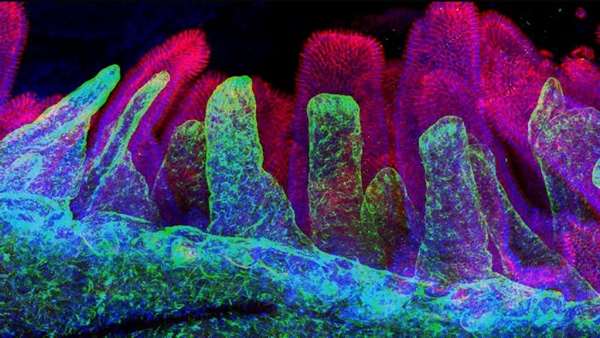Tales from the crypt: new insights into intestinal stem cells
The intestinal epithelium withstands continuous mechanical, chemical and biological insults despite its single-layered, simple epithelial structure. The crypt–villus tissue architecture in combination with rapid cell turnover enables the intestine to act both as a barrier and as the primary site of nutrient uptake.
The intestinal epithelium withstands continuous mechanical, chemical and biological insults despite its single-layered, simple epithelial structure. The crypt–villus tissue architecture in combination with rapid cell turnover enables the intestine to act both as a barrier and as the primary site of nutrient uptake. Constant tissue replenishment is fuelled by continuously dividing stem cells that reside at the bottom of crypts. These cells are nurtured and protected by specialized epithelial and mesenchymal cells, and together constitute the intestinal stem cell niche. Intestinal stem cells and early progenitor cells compete for limited niche space and, therefore, the ability to retain or regain stemness. Those cells unable to do so differentiate to one of six different mature cell types and move upwards towards the villus, where they are shed into the intestinal lumen after 3–5 days. In this Review, we discuss the signals, cell types and mechanisms that control homeostasis and regeneration in the intestinal epithelium. We investigate how the niche protects and instructs intestinal stem cells, which processes drive differentiation of mature cells and how imbalance in key signalling pathways can cause human disease.
Reference:https://www.nature.com/articles/s41575-018-0081-y?WT.feed_name=subjects_gastroenterology





ارسال به دوستان